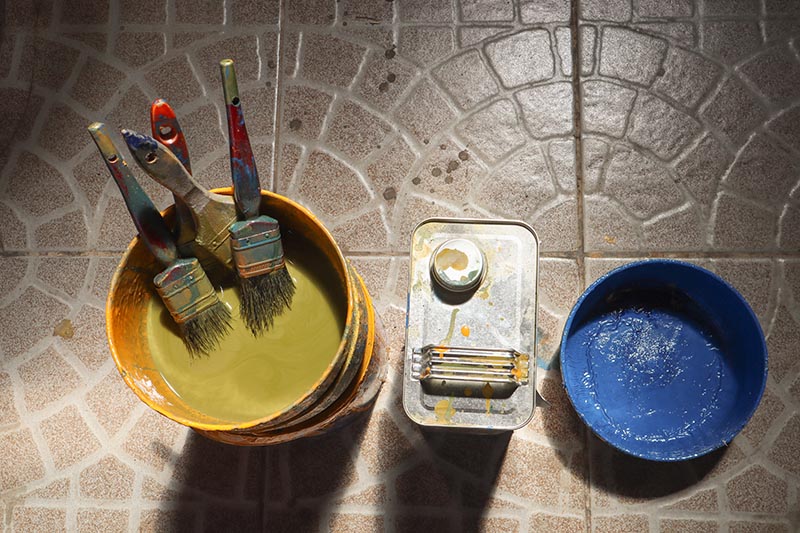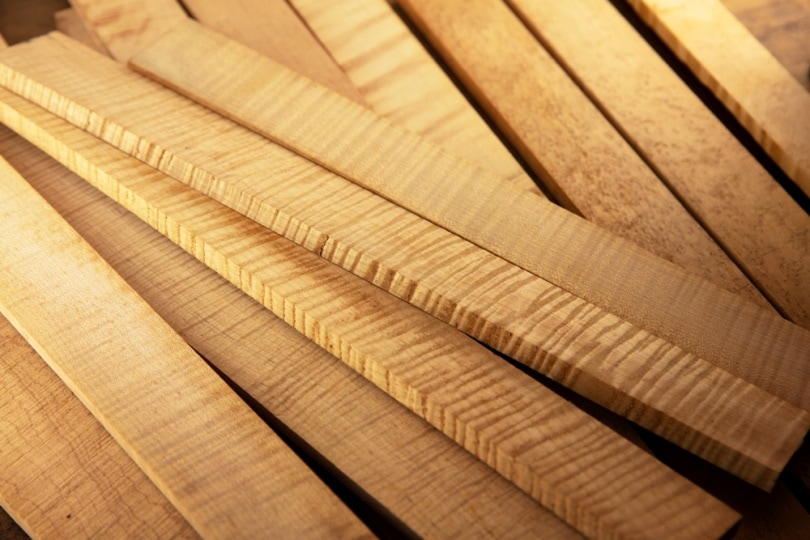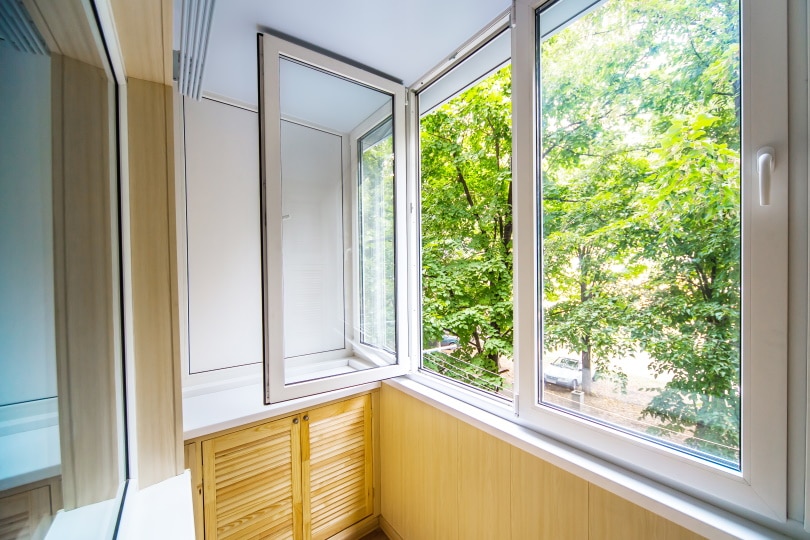Drywall vs. Wood Window Returns: Pros, Cons, & Differences
-

- Last updated:

Do you want traditional wood trimming or drywall window returns? This question has probably popped in your head more than once if you’re planning on covering the casings, sills, and headers of your windows. Some experts claim that wood is an all-time classic, and drywall can’t ever compete with it. Others believe wood is just a waste of money, and drywall window returns look much better. The truth, as always, is somewhere in the middle: both options have their strengths and weaknesses.
And in this guide, we’ll talk about both drywall returns and wood trims in great detail. We’ll go over durability, ease of use, flexibility, pricing, and other key factors that should help you make the right choice. Don’t worry, we won’t get into any technical details. Even if this is your first time working on window jambs, you’ll get the hang of it!
Drywall Window Returns
Today, drywall returns are incredibly popular for windows in US homes. They’re an excellent alternative to the “good old” wood trims that have been dominating the market for many decades. Back in the day, drywall wasn’t a go-to choice for door/window corners, but these days, it’s very common. On top of that, drywall window returns have one big pro: high workability and flexibility.
So, if this is your very first renovation project, you might want to go with drywall. Simple in design, it has a very clean “universal” look that goes with many contemporary designs and styles. It works in bedrooms, living rooms, and kitchens. More importantly, drywall is cheaper than wood, and that makes it an excellent choice if you’re on a somewhat tight budget.

Durability/Longevity
Drywall is not the most durable material on the planet. It tends to crack over time, and there’s very little one can do about that. On the bright side, drywall is fire-resistant. It’s also strong against humidity/moisture and mildew. Therefore, if you live in a hot and humid area, do consider going with drywall window returns for your home.
Workability/Ease of Use
Drywall is one of the most flexible materials for a homeowner. It doesn’t require pro skills to work with. Depending on the thickness, the sheets might be a bit heavy, but shouldn’t be too hard to handle manually. The most important thing when working with drywall is to make sure you install all the separate pieces correctly. If not, the joints will be visible, and that’s not a very good look. Also, after cutting it, don’t forget to use a rash to clean the rough edges.
Another thing to keep in mind: drywall window returns don’t stain easily. You could, of course, try different finishes on it, but this is still a con. Furthermore, you’ll need to constantly clean the returns. Otherwise, they’ll get dusty in the blink of an eye, and that dust will turn into dust and dirt.
What’s The Best Use for Drywall Returns?

Drywall returns used to be associated with something cheap and unreliable. These days, they’re a popular choice not only for middle-class homes but premium apartments as well. As mentioned, drywall is very strong against fire, boasts above-average resistance to humidity/moisture, and comes at a reasonable price. Yes, in many ways, drywall returns are a universal solution, one that fits windows of all shapes and sizes.
- Flexible; very easy to work with
- Feature a clean, universal look
- Much cheaper than wood
- Highly resistant to fire
- Doesn’t work well with stain
- Tend to get dusty
 Wood Trim
Wood Trim

The word “trimming” is used to describe any type of decorative piece that covers edges and gaps. This applies to doors, walls, ceilings, and walls, to name a few. In our case, we’re talking about window sills, casings, headers, and jambs. Without proper trimming, windows will look rough and unfinished, as the wood conceals the gaps between walls and windows. Plus, with trimming, you can set the right tone for the entire room and enrich it.
Durability/Longevity
Wood is among the most durable and long-lasting natural materials out there. That makes it a perfect choice as a long-time investment for your house. Humidity can be an issue, though, which is why you should never commit to any wood type until you check its characteristics and resistance to environmental factors. We’ll talk more about this further down the review. Overall, wood is a go-to material for window casings and sills (especially aprons and stools).
Workability/Ease of Use
In contrast to drywall, wood requires a bit more sleight of hands to work with. But, if you’re good with some basic “garage” tools, you will be able to shape it to your liking. One of the best things about wood—it does a great job of hiding imperfections. If that’s the case with your windows, wood trim will probably be the better pick. Last but not least, it is easy to maintain and fits different colors/finishes.
What’s the Best Use for Wood Trim?
Traditional houses with an old-school design—that’s where wood trim fits the most. If you’re not planning on moving out from your current home any time soon, wood will be a safe bet. If not, then it probably won’t be worth it because, well, wood is more expensive than drywall (and many other materials). On the bright side, the fans of experimenting with different paint and stains will appreciate how easy it is to apply new finishes on natural wood.
- Very durable and long-lasting
- Compatible with different finishes
- Has a premium, eye-catching look
- Does a great job of hiding imperfections
- Slightly on the expensive side
- Susceptible to humidity
 Drywall vs. Wood: What to Look For
Drywall vs. Wood: What to Look For
Drywall Window Returns
When it comes to drywall, there aren’t that many variants to pick from. The most important thing that you will have to choose is the thickness, with ¼-inch planks being the most popular option. These are easy to carry around and shape to your liking. But for walls, floors, and windows, you should probably go with ½ inches for better fitment and longer service. And one more thing: standard, green drywall is highly resistant to moisture.
However, if you want it to also resist mold and mildew, go with purple drywall. It’s more expensive but will be worth it in the long run. Other drywall types are more soundproof or fire-resistant, but in general, the common green drywall handles sound and fire quite nicely. Besides, it is really cheap and widely available.

Wood Trim
With wood, you have lots of different options. Wood trim can be pine (rather affordable), cherry, walnut (expensive), or something like birch or beech, to name a few. When choosing between different materials, pick the ones that stain well. Cherry and walnut are great for this, but oak is the obvious leader. Due to the large pores, it stains easily and looks great. Plus, you need to go with a wood that’s resistant to humidity and decay.
For that, we recommend teak. Yes, it’s widely known as the most moisture-resistant wood type on planet Earth. Thanks to its natural oiliness, it easily withstands moisture. Cypress is also a great choice in this regard, along with mahogany and white oak. That’s pretty much all you need to consider before selecting a wood species for trimming.
Is Wood Trimming More Expensive?
The short answer is yes, it is. Wood is one of the most expensive materials on our planet, and it’s definitely pricier than drywall. But how big is the difference, though? Is it significant enough to call wood unreasonably expensive? Well, the exact price for a drywall window return and a wood trim will greatly depend on local material/labor cost (if you’re planning on hiring a pro for the installation). On average, wood is 20-30% more expensive. That equals $20-25 saved on each window.
On top of that, going with drywall will save you an hour of labor. So, does that make drywall better? As mentioned, wood materials last longer and require minimal maintenance. However, if you live in an extremely humid area, that might not be the case. Wood is less resistant to environmental factors than drywall (unless it’s teak, of course). This can be easily fixed, though, if you treat the wood casings with the right chemicals, like a wood preserver that you can get at any local home improvement store.

Can You Combine Drywall with Wood?
Yes, you most definitely can. While this doesn’t happen very often, many builders do combine these two options to achieve the best results. For example, you can use wood trimming for the windowsill and the stool but cover the casings and the top (the headers) with drywall. It all comes down to your budget and what you want the windows to look like. Now, since the stool and the sill are the most “in-your-face” parts, it might be a good idea to use wood for that and finish the rest with drywall.
Please do keep in mind that you’ll probably have to paint the drywall returns to match the wood. In most cases, carpenters use enamel paint. It’s great at imitating that natural wood color and holds on very well on drywall. Unfortunately, drywall doesn’t stain well, which means your coating options are rather limited.
Which Is the Right Option for You?
This depends on what you’re in the market for. If you want the windows to have a timeless look and for the casings to last for a long time, wood trim will be the right choice. It will cost you extra, though. Furthermore, in a hot and humid environment, wood jambs tend to deteriorate quicker than usual. With drywall window returns, you’ll get a flexible and universally compatible alternative.
It’s much easier to work with (even a novice will be able to handle it) and you won’t have to worry about natural elements. Oh, and if you’re planning on installing drapes, we’d recommend drywall returns. The reason: the sleek, fancy wood trim will simply disappear behind the fabric. Right now, the “market share” of drywall and wood is roughly 50%. Yet, in commercial buildings, and especially high rises, 95-99% of windows have drywall returns.
| When to go with Drywall Window Returns | When to go with Wood Trim |
| You’re on a limited budget | You want to try different finishes/paints |
| Flexibility/ease of use is a top priority | You’re ready to pay extra for premium looks |
| You live in a hot and humid area | Durability/longevity is a must |
| The room has a modern, trendy design | The room features a retro, classic style |
Conclusion
If you’re building a house from the ground up or renovating the windows and want a fresh new look, you can go either with drywall returns or wood trim. Both have their benefits and disadvantages. Wood trim is the more expensive choice, but it also looks great and lasts longer. Drywall return, in turn, takes less effort to use/install and comes at a more affordable price.
Pay extra attention to the pros and cons, and don’t commit to any of the options unless you’re 100% sure about it. Drywall window returns and wood casing fit different projects, so, in some ways, your choice will be dictated by the style/design of the house. Stay tuned for more guides, and we’ll see you next time!
Featured Image Credit: Viktoriia Kotliarchuk,Shutterstock
Contents

 Wood Trim
Wood Trim